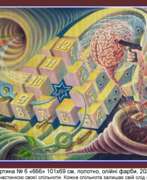Surrealism

Surrealism
Surrealism was an avant-garde movement that reshaped visual art and literature in Europe between the world wars, famous for its dream-like scenes and bizarre juxtapositions. Originating in the aftermath of World War I, it offered a gateway for artists to explore the unconscious mind, often depicting unnerving and illogical scenes.
This movement was not confined to one specific style, allowing for a wide array of expressions, from the hyper-realistic works of Salvador Dalí to the distorted realities of René Magritte. Surrealism's signature techniques, such as automatism and the use of symbols, create art that invokes a sense of the absurd and challenges viewers' perceptions.
Surrealism delved deep into emotional expression and the subconscious, drawing heavily on psychoanalysis to bring forth repressed urges or traumas onto the canvas. Its influence has been profound and enduring, with its works still commanding attention and discussion among art collectors and experts today.
For enthusiasts and professionals keen to delve deeper into the realm of Surrealism, we encourage you to sign up for our exclusive updates. Receive alerts on new sales and auction events featuring Surrealist works, ensuring you never miss an opportunity to engage with this pivotal movement in art history.
| Country: | Europe, France, North America, South America |
|---|---|
| Start of the period: | 1920 |
| End of the period: | 1980 |















